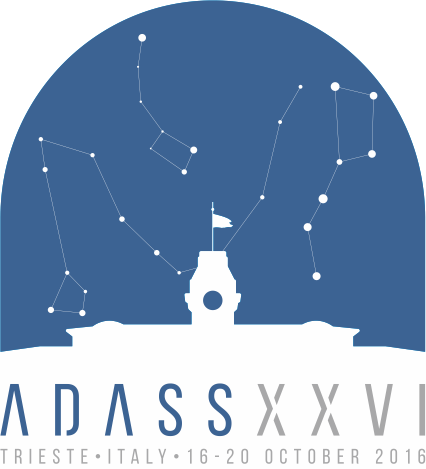Duran Javier
Contact

- Position:
- ESA/ESAC - European Space Astronomy Center
- Address
- Spain
Miscellaneous Information
- Miscellaneous Information
-
Abstract Reference: 30997
Identifier: P4.7
Presentation: Poster presentation
Key Theme: 4 Long-term Management of Data Archives
Generation and publication of Gaia Data Release 1 in the Gaia ArchiveAuthors:
Duran JavierWe are all well aware of the success of the Hierarchical Progressive Surveys (HiPS) if for images surveys and catalogues. We are proposing to extend the HIPS usability to spectra data. Spectrum are neither points (suitable for catalogue) and neither images. Since every spectrum represents an aperture on the sky from from which the light is spread over ta defined wavelength coverage, it should possible to represent as HIPS tiles the actual aperture used on the sky and use the HIPS metadata extraction to expose the wavelength coverage. The advantages of using HIPS in addition to MOC are the link to all input spectra as well as giving the user an indication of the number of input for each HIPS pixel. Although not available yet, we propose a way to search and filter the HIPS entries based on a user selected filter on the metadata to be able to search and select on the wavelength axis.ESAC Science Data Center group (ESDC) at ESA/ESAC was heavily involved in the generation and was in charge of the publication of the Gaia Data Release 1 in the Gaia Archive. ESDC group contributed to the generation of GAIA and TGAS Catalogues. This task required a filtering process of the original data to remove all sources that do not commit the quality requirements. Once these filters were applied, the number of GAIA sources goes beyond 1.1 Billion and beyond 2 Millions in case of TGAS sources. Several transformations were also needed for the original data before it could be part of the final release and ingested in the Gaia Archive. Aside from the mentioned catalogues, five more tables containing only variable sources were also part of the Gaia Data Release 1. ESDC also participated if the generation of those tables and was responsible of its ingestion in the Gaia Archive. We present here the tool ESDC designed and developed to generate all mentioned tables and to publish them in the Gaia Archive.



